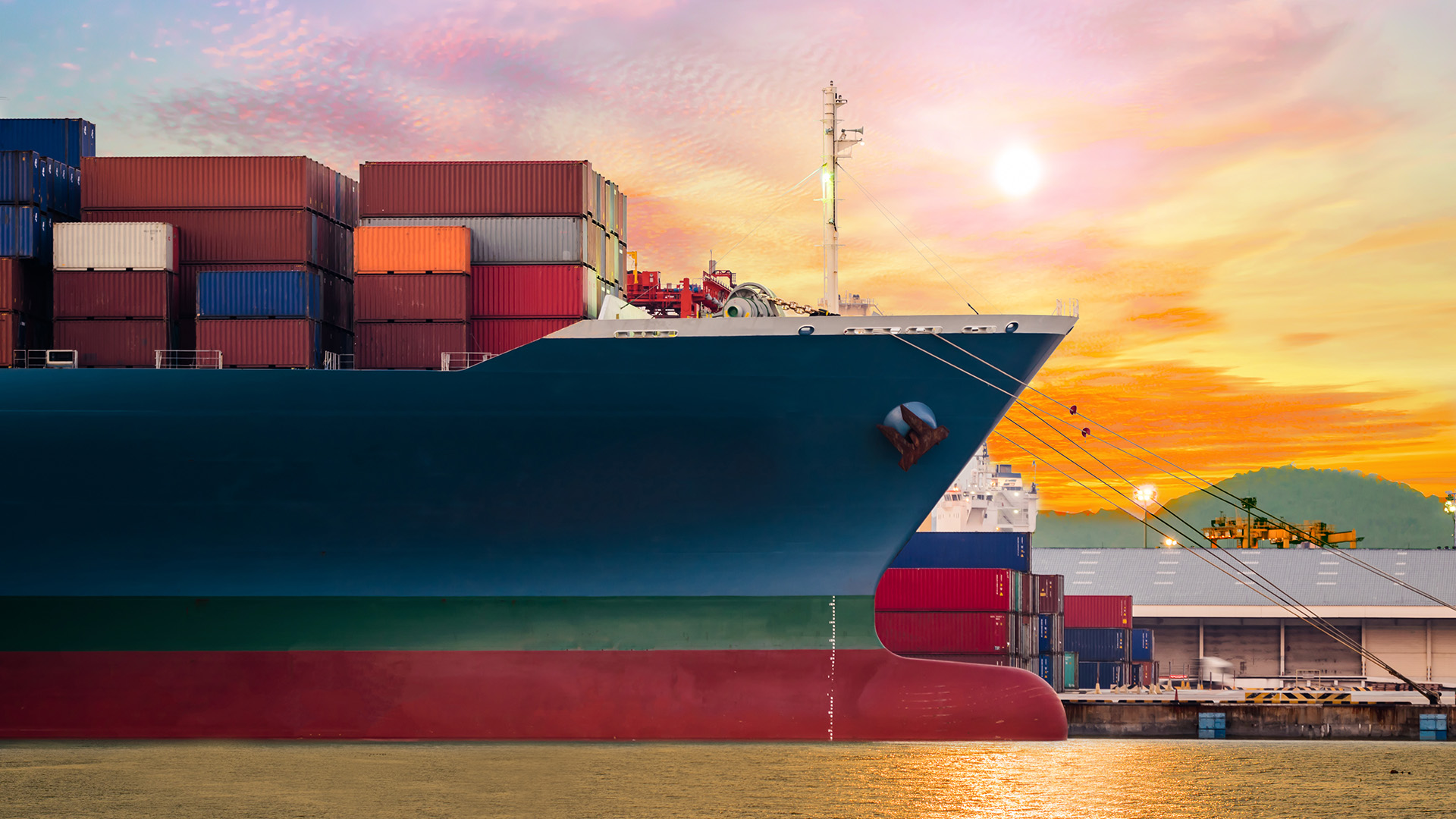What if you could plan every voyage with the precision of a live model of your vessel?
In the fast-paced maritime shipping industry, real-time data and actionable insights are essential for smarter route decisions. Digital twin route optimizers combine IoT sensor data, vessel modeling, and real-time analytics to reshape voyage planning.
This article will show how these tools create tangible value for operators by improving fuel efficiency, ensuring compliance, and enabling dynamic adjustments, all while simplifying the complexity of modern maritime operations.
What is a digital twin route optimizer and how does it work in maritime voyage planning?
A digital twin route optimizer is a specialized solution that brings together the latest in vessel modeling, IoT sensor data, and real-time analytics to make voyage planning in the maritime shipping industry smarter, safer, and more efficient.
At its core, it creates a living digital replica, the “digital twin”, of a ship by fusing live operational data streams from shipboard systems with historical records. These inputs include engine loads, fuel flow, weather data, real-time vessel telemetry, and external maritime conditions. Once this model is in place, advanced algorithms simulate how the vessel will behave in different scenarios at sea.
From there, the platform uses dynamic modeling to forecast performance and continuously optimize routing. It takes in changing elements like metocean updates, regulatory boundaries, and operational constraints, then recommends the most favorable route and speed, adapting every day as new data arrives. This continuous optimization is what distinguishes the digital twin approach from static, one-off plans.
Core Components of a Digital Twin Route Optimizer for Shipping
- Vessel Digital Twin
A high-fidelity model built from real and historical data, representing the ship’s design, systems, and performance envelope. - IoT Sensor Integration
Continuous streams of onboard data (fuel consumption, speed, engine status) actively informing the model. - Real-Time Analytics Platform
Merges live data with external inputs (weather patterns, wave height, wind speed) for precise, on-the-fly adjustments. - Optimization Engine
AI-driven algorithms that factor in commercial, operational, and compliance goals like CII and EEXI standards. - Shore and Ship Collaboration Interface
Dual delivery of daily route and speed recommendations to onboard crew and shore-based teams (as enabled by the Danelec Voyage Optimization module).
How the Digital Twin Processes Real-Time and Historical Data for Decision-Making
The digital twin constantly learns from both real-time IoT sensor data and accumulated operational history. By combining these, it recalibrates vessel performance predictions, adjusts to weather changes, and incorporates maintenance needs or regulatory requirements.
When a storm front forms, or a new ECA zone is declared, the optimizer evaluates these developments using its vessel digital replica. Recommendations for speed and course are updated daily, supporting Just-In-Time arrivals and maximizing fleet efficiency.
This ecosystem connects data from hydrodynamic modeling, predictive maintenance schedules, and external weather feeds, so every routing decision is informed by current reality, not just past assumptions.
Main Differences: Digital Twin Route Optimizers Versus Conventional Route Planning Systems
- Dynamic versus Static
Conventional systems follow pre-set schedules and historical routing; digital twins adapt routes in real time as sea conditions and ship status change. - Integrated Data Use
Old systems separate navigation from performance or maintenance analytics. Digital twin solutions leverage integrated sensor-driven insights, giving a full picture. - Operational Impact
Digital twins deliver tangible outcomes; like up to 10% fuel savings, better CII scores, and measurable emission reduction, by aligning actual vessel performance with optimal plans (as delivered through Danelec’s end-of-voyage reports). - Continuous Crew and Shore Engagement
Instead of a single plan for the voyage, daily updates empower the crew and shore teams to collaboratively steer towards better operational efficiency and compliance.
In today’s landscape, adopting real-time, data-rich voyage optimization isn’t just a technical upgrade. It’s an operational shift that brings transparency, actionable insights, and genuine competitive edge to every voyage.
How does a digital twin route optimizer deliver measurable value to shipowners and operators?
A digital twin route optimizer empowers maritime shipping by fusing real-time data, predictive modeling, and advanced analytics. This tool enables vessel owners and operators to make voyage decisions that are both cost-effective and compliant with evolving regulations. With data integration at its core, the optimizer translates complex variables into clear actions that improve operational efficiency, fuel efficiency, and sustainable outcomes for every voyage.
Tangible Impact: From Fuel Consumption Metrics to Cost-Saving Strategies
Digital twin route optimizers synthesize the following for measurable gains:
- Fuel consumption metrics: By modeling onboard systems and actual vessel behavior, shipowners gain transparency into fuel use on every leg of the route.
- Emission regulations: Voyage plans are automatically structured to keep vessels within CO2 and ECA requirements, increasing emission compliance and protecting commercial trade eligibility.
- Weather data integration: Hydrodynamic modeling factors in wind speed, wave height, and currents. Real-time environmental data allows the optimizer to adjust courses and speeds daily for minimum resistance, supporting safe and efficient passage.
- Voyage performance analytics: Crew and fleet managers track actual vs. optimized performance, measuring fuel savings, emissions reductions, and operational efficiency in a single interface.
- Cost-saving strategies: By aligning every recommendation with fuel efficiency and time charter equivalent (TCE) targets, the optimizer supports lower OPEX and TCE uplift, strengthening bottom-line performance.
Data Integration for Transparent and Compliant Voyage Planning
The digital twin solution integrates a broad range of critical data:
- IoT sensor data: Live engine loads, weather instrumentation, and onboard system states feed directly into the analytics engine.
- Regulatory zone mapping: Active avoidance of emission-controlled areas, piracy zones, and shallow water thanks to real-time compliance overlays.
- Predictive maintenance data: Condition-based alerts surface issues before they escalate, allowing better arrival planning and fewer unexpected disruptions.
- Metocean forecasts: Updated oceanographic and weather conditions enable dynamic routing, keeping planned ETA and fuel burn in balance.
This total visibility lets shipowners deliver both commercial value and regulatory peace of mind.
Real-Time Optimization and In-Voyage Adjustments
Digital twin-driven optimization is not static. The system delivers daily route and speed recommendations to both onboard crew and shore teams. When weather shifts or operational constraints emerge, the optimizer recalculates in near real-time, ensuring continuous voyage optimisation.
- Onboard and shoreside alignment is achieved by sharing the same performance analytics and advisories.
- Hydrodynamic modeling enables vessels to safely adjust to changing conditions, maximizing fuel efficiency while keeping CII and EEXI targets on track.
- Transparent decision support builds confidence: every adjustment is backed by ship performance analytics, empowering crew to act decisively without guesswork.
Leaders in the maritime shipping industry now turn to integrated voyage optimization to futureproof their operations, unlock real gains in fuel efficiency, and navigate the complexities of global compliance, without sacrificing profitability or crew clarity.
What are the practical steps to implement digital twin route optimization for your fleet?
Adopting a digital twin route optimizer for voyage planning in the maritime shipping industry is an investment in smarter, safer, and more sustainable fleet operations. Making the transition requires a focused implementation strategy, one that addresses both technical and human factors from day one.
Building a foundation for success involves predictive maintenance readiness, system interoperability, robust data integration, and a plan to scale across all vessels. Below is a clear roadmap to help maritime professionals move from initial planning to seamless daily use.
Assessing Fleet Readiness and Creating an Implementation Strategy
Start by evaluating the digital maturity of your fleet. Review existing navigation, communication, and performance monitoring systems for compatibility with new voyage optimisation tools. Consider where legacy system upgrades or retrofits will be needed to support real-time data connections and hydrodynamic modelling.
Key first actions:
- Map all vessels’ onboard and shore-based system capabilities.
- Engage technology partners to outline gaps in hardware, IoT sensor data, and software for operational efficiency.
- Define your clear goals: fuel efficiency, emission compliance, cost control, preferred scheduling, or all of these.
Strong leadership and buy-in from technical and commercial teams form the backbone of a successful implementation strategy.
Laying the Foundation: Crew Training and Data Integration
Invest in targeted crew training programs that demystify the digital twin route optimizer for voyage planning. Equip onboard teams and shore-based staff to interpret real-time weather data, use ship performance analytics, and respond to dynamic routing recommendations.
Embed a data integration framework that unites sensor data, high-fidelity weather inputs, and operational parameters into a single, secure workflow. This streamlines predictive maintenance and real-time decision making, while also supporting regulatory compliance.
Best practices:
- Deliver ongoing digitalization workshops for all roles.
- Standardize data collection and transfer protocols.
- Foster a culture of feedback and transparency using end-of-voyage reports to benchmark progress.
Ensuring System Interoperability and Secure Scaling
During integration, focus on system interoperability between new software and existing platforms, whether for navigation, maintenance forecasting, or reporting. Work closely with vendors and technology partners to validate connections and ensure data can move freely between ships and office environments.
Protecting sensitive information is crucial. Collaborate with IT teams to audit data security, implement secure connections, and meet maritime cybersecurity standards.
For fleets spanning multiple routes or vessel types, create an implementation timeline that begins with pilot vessels and gradually expands as technical and operational confidence grows.
Long-Term Success: Continuous Improvement and ROI
To realize ongoing return on investment and regulatory compliance, support continuous improvement by:
- Using Danelec’s AI-driven optimization algorithms to generate and share daily voyage recommendations for both crew and shore teams.
- Reviewing end-of-voyage performance data, including fuel savings, emission reductions, and schedule reliability compared with planned outcomes.
- Establishing regular cross-team reviews, where crews and office staff analyze performance analytics to adjust processes and propagate success fleet-wide.
By grounding implementation in readiness, interoperability, crew empowerment, and data-driven feedback, maritime organizations build a scalable foundation for digital twin technology adoption. This approach transforms not just individual voyages but the operational and commercial future of the entire fleet.
Conclusion
Looking back at how digital twin route optimizers transform voyage planning, I see their impact extending far beyond simple route choices. By combining real-time IoT sensor data, vessel modeling, and dynamic analytics, these tools provide shipowners and operators with a clear picture of vessel performance and the most efficient, compliant routes to take. This approach doesn’t just save fuel or cut costs, it changes how we think about managing a fleet in an increasingly complex and regulated maritime environment.
The value lies in bringing together diverse data streams, from weather updates to hydrodynamic models, into a single decision-making platform that supports both strategic planning and real-time adjustments. This capability is key to navigating operational challenges while improving fuel efficiency and meeting emission standards. As someone who has followed these advances closely, I find the practical steps for implementation just as important. Ensuring smooth integration with legacy systems, training crews, and setting clear goals are crucial to unlocking the full benefits of this technology.
Looking ahead, the potential for digital twins to evolve alongside IoT innovations and AI-driven analytics promises even greater gains in operational efficiency and sustainability. The real question for each of us in maritime is not if we should adopt digital twin route optimization, but how soon we can begin to use these insights to sail smarter and cleaner. After all, embracing technology thoughtfully is how we chart a course toward a more efficient and environmentally responsible future at sea.




